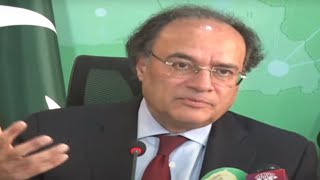Pakistan’s Trade and Investment Prospects in Sri Lanka
Ismail Suttar, President Employers Federation of Pakistan
The recent high-poweredtrade andinvestment conferencein Colombo, Sri Lanka, hosted forPakistani Prime Minister Imran Khanand his carefully assorted businessmenby the newly-elected Sri Lanka Government, concluded with arenewed sense of solidarity.
As I recall,during the 1971 Indo-Pak War [that ledto the creation of Bangladesh], the Sri Lankan Government had allowedPakistani jets to refuel in their airbases,and then later in 2009 Pakistan returned the favor by offering armsand ammunition to Sri Lanka duringits civil war against the LiberationTigers of Tamil Eelam (LTTE). In between that period, the two countriessigned a Free Trade Agreement (FTA) in 2005, which featured a tariff-free exchange of 203 items andan annual import limit of up to 10,000 Metric Tons (MT) of tea from Sri Lanka.
However, for the tea-lovingnation of Pakistan, Ceylon tea, which isoriginally produced in the highlands ofSri Lanka, only hasa limited market reachas compared to the Kenyan tea. As perdata published by the Kenyan teadirectorate, in 2020, Pakistan purchased40 percent of the total Kenyan teaproduced in Kenya, which made theSouth Asian country the top consumerof the popular tea.
In Britain, 50 percentof the tea originates from Kenya, as ispreferred by connoisseurs and commondrinkers. Although the Ceylon tea is no different than its counterpart and is farinferior to the Indian and Chinesevarieties, in the sense that both arecultivated in hot climatic conditions, andboth are rich in taste and blend in perfectsync with milk, sugar, or lemon, it is not popular in Pakistan.
According to the import trendfound on the website of the InternationalTrade Centre, Pakistan imports its teamostly from Kenya and China. The totalimport is under US$ 700 million, ofwhich Ceylon tea from Sri Lankaconstitutes 0.20 percent or US$ 1.6million – far below its potential of US$55million. This is one of the good areasbesides the usual vegetable plaitingmaterial, timber, and rubber, where thetwo countries can develop friendlybilateral relations.
In turn, Sri Lankaninvestors can partner with thePakistani Government in its quest todevelop the domestic tourism industry– an area where Pakistan is in anascent stage right now. There areworld-renowned heritage Buddhistsites that will ring bells among travelenthusiasts in Sri Lanka.
Balochistan,the province that I represent due to myassociation with the Lasbela Chambersof Commerce, harbors mysterious andwidely undiscovered territories like theCity of Caves, which was once used byBuddhist monasteries in the 8thCentury. If we go up north towardBasha Dam, one will find someinteresting petroglyphs carved onstones by merchants, invaders, pilgrims, and even kings who came toconquer.
These, thousands of inscriptionsin the form of animals like sheep, ibex, and Markhor, reflect a culture asold as the golden era of the Epipaleolithicperiod and pre-IslamicBuddhism times. Even further, ahead of the ancient stupas in Taxila, thereis a Valley of Buddha, near Takht-e-Bai, and other such interesting spots in Barhamanabad, Sanghar.
To the best of my knowledge, the Government is currentlytrying to convert several historically significant sites into tourist-friendly zones, with the help of international Destination Management Organizations (DMOs), to spur domestic tourist mobility.
The recent 5-Star hotel in MalamJabba, Bejaan, is one example where a US-based Pakistani investor collaborated with local business mento open a resort, and I am confident the same can be achieved for 2- and 3- Star hotels in popular tourism locations identified by the Economic Council of Employers’ Federation of Pakistan – a benchmark publication expected insummers.
Our Prime Minister, HisExcellency, Imran Khan, has already offered the Lakdivas the opportunity to invest in the Special Economic Zones (SEZs), set up factories there, and then export to the world. Work on building these industrial parks (SEZs) is taking place at a record pace, for example, in Rashkai, Port Qasim, Mirpur, Dhabeji, Bostan, etc.
The enticing fiscal benefits for investors like tax holidays, 5-year income tax exemption, and a one-time tax-free import of capital goods among other advantages offer a remarkable opportunity to be apart of the 2030 central focus of Asia’seconomic hub – The Islamic Republicof Pakistan. There are several industrial parks, capable of warmly accommodating the cash inflow of Sri Lankan Rupee, such as power, textiles, sports, agriculture, and real estate.
Pakistan needs knowledge driven investment and capacity-building training in areas like tourism and hospitality and the Lakdivas are masters– huts, cabins, inns, you name it and they have advanced expertise in it.
It is high time that the two countries add non-traditional itemsinto the trade such as minerals. Pakistan has 92 varieties and currently, the EFP has taken the first initiative to process raw minerals into value-added chemical products for exports and further forward them to the local industries. I say with full conviction that given the keenness I saw among the attending Sri Lankan businessmen in the conference on chemical production, both countries can work in harmony to gain global prestige in chemical manufacturing.
Sri Lanka is already making hydrated lime, for example, and we can buy it from them to address our waste-water issues in densely populated and industrialized cities like Karachi. The fishing industry can also be added to the mix and if God Wills, within a year the target of US$ 1 billion surpluses in the existing trade, canconveniently be achieved.
The Government is working assiduously to resolve the energy crisisby setting up the first Electricity Market in Pakistan, with a transparent powergeneration, transmission, and distribution structure, and I feel proud that the EFP has been aggressively voicing this need for almost two years now.
Pakistan can make cotton and Pakistan can produce it all. As apatriotic businessman, I am optimistic that under the dynamic leadership of our Premiere, Imran Khan, if Pakistan and Sri Lanka work together then we can up root poverty and boost the economic growth of South Asia in less than a decade.
Copyright Business Recorder, 2021





















Comments
Comments are closed.